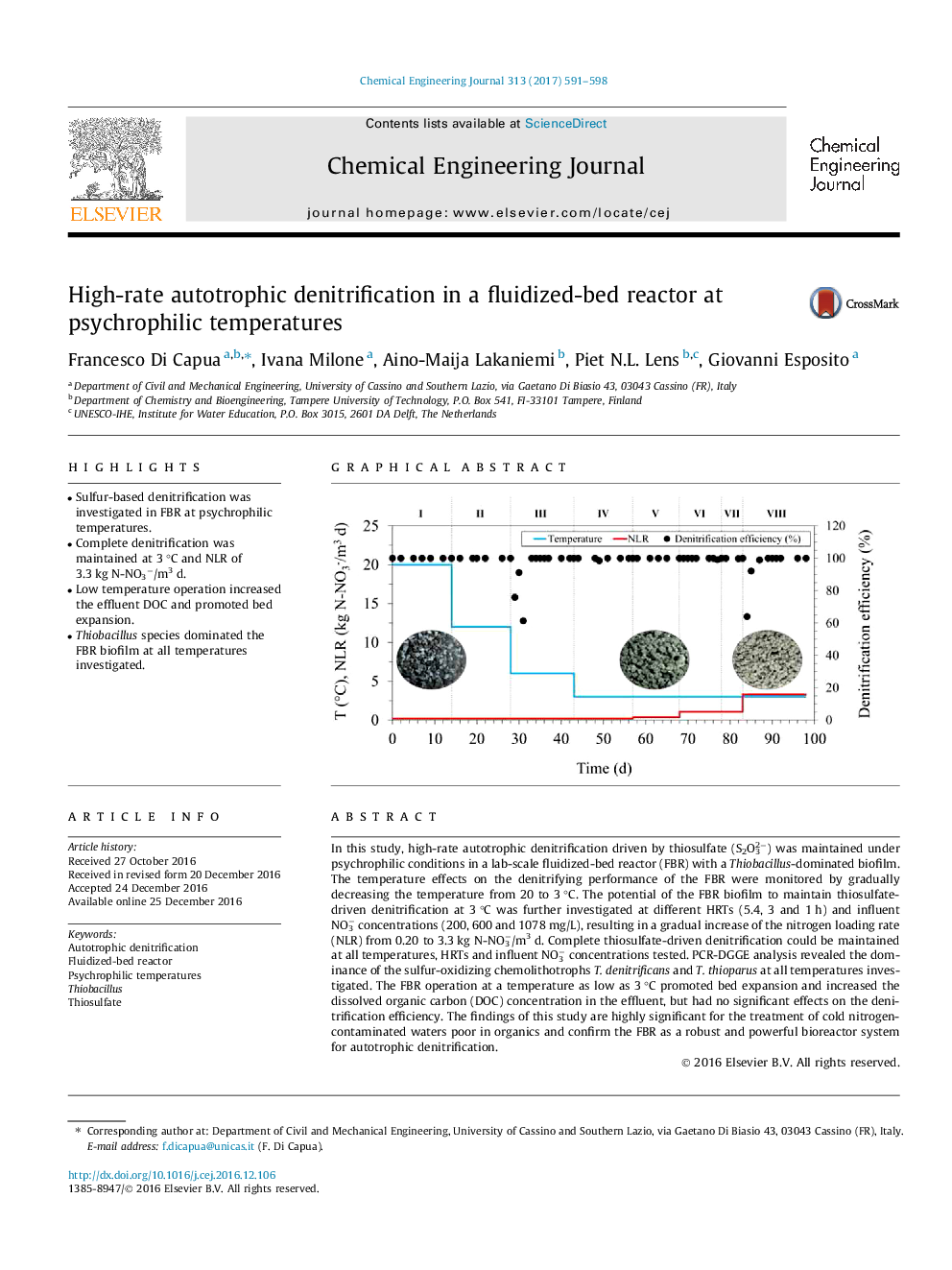| Article ID | Journal | Published Year | Pages | File Type |
|---|---|---|---|---|
| 6466586 | Chemical Engineering Journal | 2017 | 8 Pages |
â¢Sulfur-based denitrification was investigated in FBR at psychrophilic temperatures.â¢Complete denitrification was maintained at 3 °C and NLR of 3.3 kg N-NO3â/m3 d.â¢Low temperature operation increased the effluent DOC and promoted bed expansion.â¢Thiobacillus species dominated the FBR biofilm at all temperatures investigated.
In this study, high-rate autotrophic denitrification driven by thiosulfate (S2O32â) was maintained under psychrophilic conditions in a lab-scale fluidized-bed reactor (FBR) with a Thiobacillus-dominated biofilm. The temperature effects on the denitrifying performance of the FBR were monitored by gradually decreasing the temperature from 20 to 3 °C. The potential of the FBR biofilm to maintain thiosulfate-driven denitrification at 3 °C was further investigated at different HRTs (5.4, 3 and 1 h) and influent NO3â concentrations (200, 600 and 1078 mg/L), resulting in a gradual increase of the nitrogen loading rate (NLR) from 0.20 to 3.3 kg N-NO3â/m3 d. Complete thiosulfate-driven denitrification could be maintained at all temperatures, HRTs and influent NO3â concentrations tested. PCR-DGGE analysis revealed the dominance of the sulfur-oxidizing chemolithotrophs T. denitrificans and T. thioparus at all temperatures investigated. The FBR operation at a temperature as low as 3 °C promoted bed expansion and increased the dissolved organic carbon (DOC) concentration in the effluent, but had no significant effects on the denitrification efficiency. The findings of this study are highly significant for the treatment of cold nitrogen-contaminated waters poor in organics and confirm the FBR as a robust and powerful bioreactor system for autotrophic denitrification.
Graphical abstractDownload high-res image (142KB)Download full-size image
